
By Amanda Demopoulos - U.S. Geological Survey
July 21, 2012
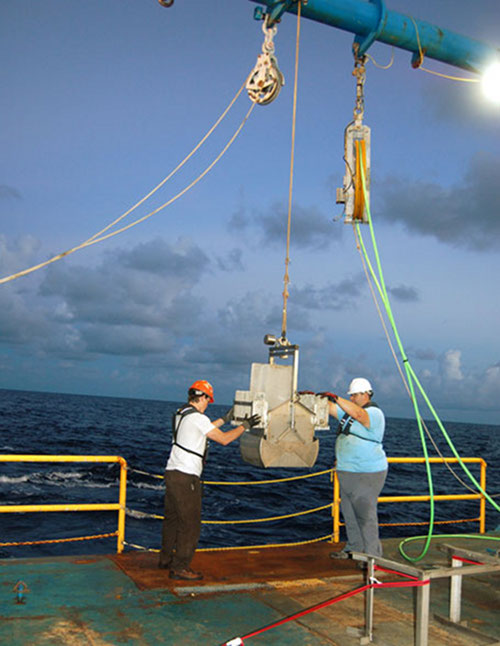
Adam and Miles prepare to launch the box core at the site. Image courtesy of Lophelia II 2012 Expedition, NOAA-OER/BOEM. Download larger version (jpg, 1.4 MB).
Most of the Gulf seafloor is covered with mud, and while this mud may appear devoid of life, it represents a highly diverse ecosystem thriving with tiny, unseen critters. These animals play many important roles, including serving as food for other animals, and through their movements in the mud, allowing oxygen and food to penetrate deeper into the sediment. Thus, these animals are important movers and shakers of deep sea.
Box corers have been used for decades, not only to sample the sediment environment but also for benthic community analysis. The design of the box core used on this ship is similar to the one developed by Robert Hessler and Peter Jumars in the early 1970s to provide quantitative sampling of smaller deep-sea animals (less than five millimeters). Prior to this, the diversity of the deep sea wasn’t fully appreciated until we had the appropriate gear to sample it.
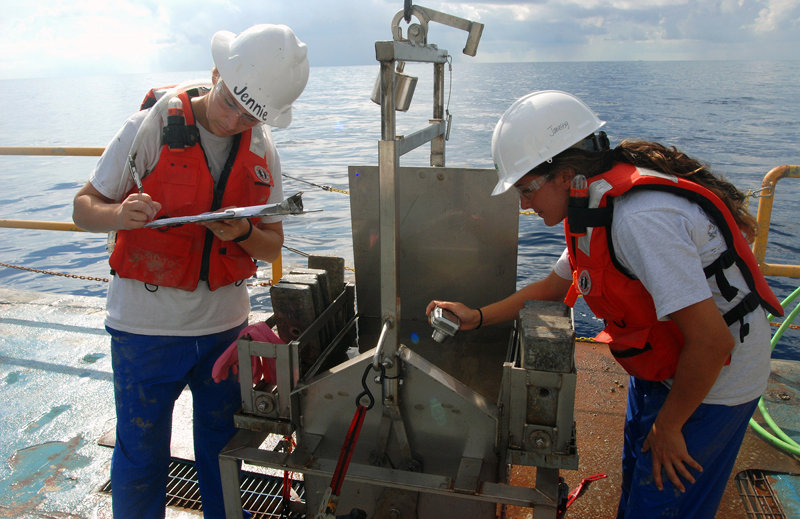
Jennie and Janessy document the box core after it is brought to the surface, filled with Gulf of Mexico deep-sea sediment. Image courtesy of Lophelia II 2012 Expedition, NOAA-OER/BOEM. Download larger version (jpg, 843 KB).
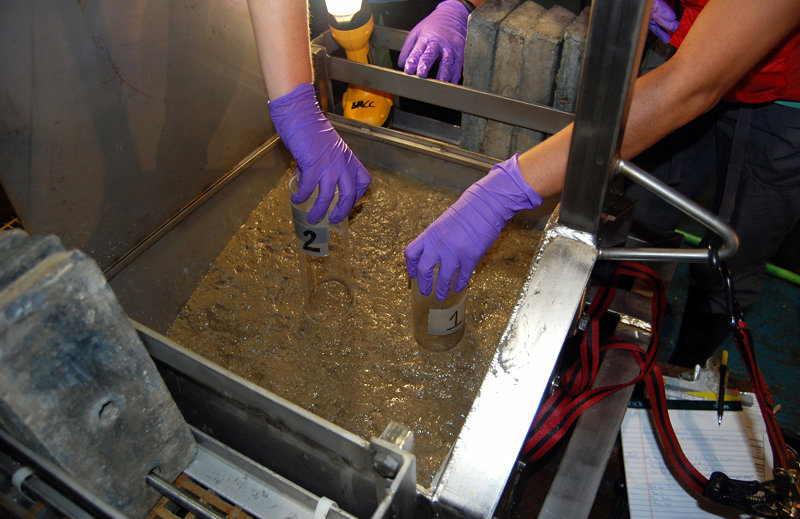
Samples are collected from the box core after it is retrieved. Image courtesy of Lophelia II 2012 Expedition, NOAA-OER/BOEM. Download larger version (jpg, 773 KB).
The box corer is lowered to the seafloor on a wire at a set rate until the core hits the bottom. The box then sinks into the mud, taking a 0.25 square meter punch out of the seafloor, like a cookie cutter slicing into dough. As the corer is lifted from the bottom, a spade or shovel slides underneath the box to hold the mud inside.
Once the corer is recovered, Janessy and Jennie take pictures and subsample the collected mud to characterize the animal community and sediment environment (e.g., organic carbon content, particle size). In addition, they sieve some of the mud at sea to separate fauna that will be later analyzed for stable isotopes.
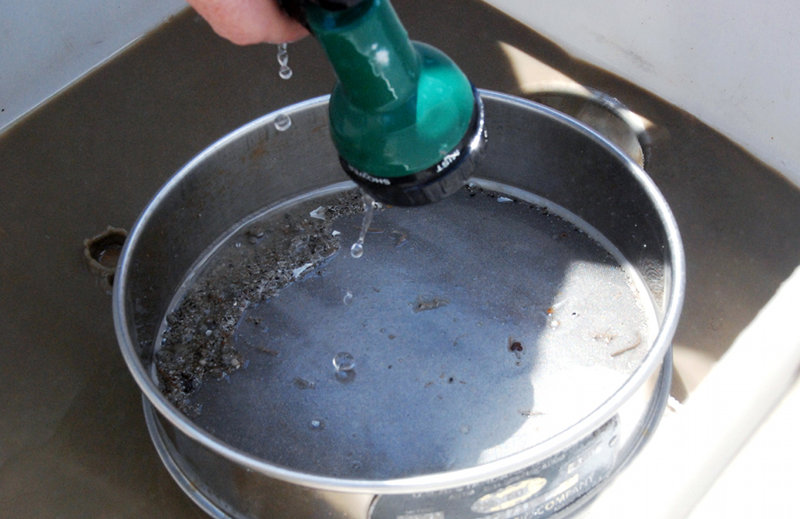
Some of the sediment samples collected from the corer are sieved, leaving behind fauna for isotopic analysis. Image courtesy of Lophelia II 2012 Expedition, NOAA-OER/BOEM. Download larger version (jpg, 559 KB).
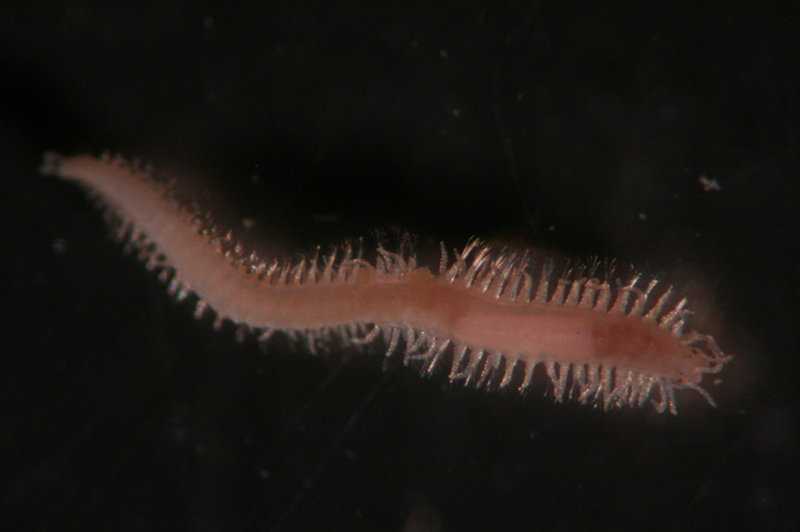
Syllidae from collected sediments at the Viosca Knoll826 site in the Gulf of Mexico. Image courtesy of Lophelia II 2012 Expedition, NOAA-OER/BOEM. Download larger version (jpg, 1.4 MB).
It takes lots of hard work at sea to carefully collect these samples. However, our work isn’t done when we hit the dock. In the lab, mud samples will be sieved and animals removed, identified, and analyzed for stable isotopes in order to ascertain who lives there and who eats whom.
While box corers are not the only gear used to collect deep-sea mud, we are using them because there is a great deal of historical box core data available worldwide, including the Gulf; thus, by using the same gear, we will be able to compare our results with these extensive datasets.